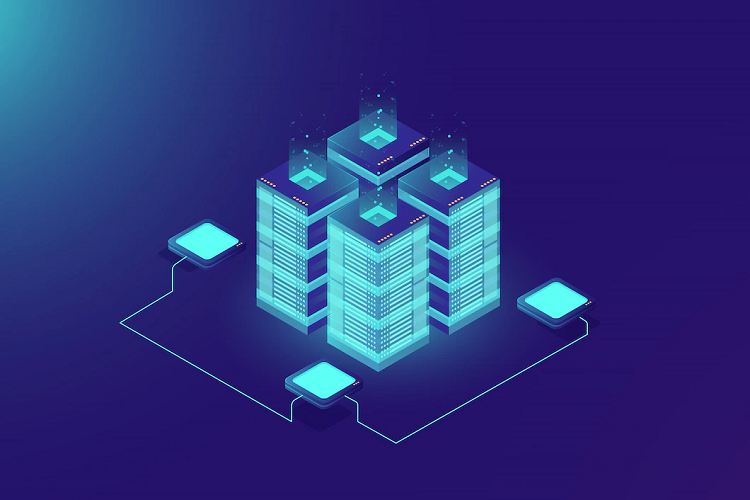SEO is one of the major strategies in digital marketing since it enables the company to generate traffic naturally, without misuse of short-call options. Nevertheless, one of the biggest issues clients and businesses continue to struggle with is the assessment of ROI for SEO services. In this guide, I will outline how to measure the return on investment (ROI) for SEO and stay sane by keeping an eye on the right metrics.
What is SEO ROI?
The technical term that is usually used in business performance analysis to describe the level of return achieved from investments made is ROI, or Return on Investment, to be applied to the efficiency of SEO as well. From an SEO perspective, it describes how much revenue a business obtains from investing in various strategies to optimize their websites for SERPs.
In simple terms, ROI for SEO entails comparing the amount of increase in revenues attributable to Search engine optimization against the amount spent on SEO. With this measurement, businesses can understand whether its investments in SEO are fruitless or not besides identifying the quality of traffic, conversion, and sales.
A positive ROI implies that the amount of revenues generated through SEO is more than the total costs incurred for such a campaign while negative ROI means that overall costs have surpassed the amount of revenues coming from SEO results. Businesses will be able to make the right decisions concerning increasing their strategies and resource utilization by routine analysis of SEO ROI.
Why is Measuring SEO ROI Important?
In matters concerning Search Engine Optimization it is important to identify the ROI (Return on Investment) to make better decisions in your marketing plans. Therefore, ROI assists you in knowing the effectiveness of your efforts in creating awareness of your website, creating traffic, and having potential client leads turn into buyers.
Foremost, it helps you determine SEO returns by quantifying the impact of the SEO campaigns on the site’s organic traffic flow positive ranking changes and overall visibility. These indicators provide a basis on which to decide if your SEO strategy is working and may need to be adjusted for certain outcomes. It all helps in making decisions based on the data collected instead of extrapolation or assumptions.
Moreover, a measurement of SEO ROI also affords one the greatest advantage of tracking the set SEO campaign’s progress over the time in question as the data gathered in the process serves as useful insights as to the efficacy of the strategies adopted as well as give one the possibility of tweaking the said strategies. This helps you to recognize patterns and trends within your site, which can then be used to improve your SEO and yield an even improved performance.
Therefore, understanding and evaluating the SEO returns is very crucial if your online marketing strategies are to work. If you know the ROI of SEO, you cannot help but make intelligent strategies, allocate time and strategic funds properly, measure the enhancement over time, and make improved strategies towards better results.
Key Metrics to Measure SEO ROI
Evaluating ROI on Tools and Techniques used in Search Engine Optimization is very vital to know how useful your strategies are for enhancing the performance of your website. Here are some key metrics to measure SEO ROI:

1. Organic Traffic
This is the number of visitors who come to your site through the organic search engine results. This means that many of the users who visit your site are the ones you were actively seeking through your Search Engine Optimization strategies.
2. Conversion Rate
This state defines how many of visitors complete the intended call to action; it could be buying something, filling in a contact form or subscribing to a newsletter. Optimizing SEO should also help make better the conversion rates.
3. Keyword Rankings
Specific keyword search engine rankings to imply how organically you are attracting the traffic efficiently. Holders of higher ranks tend to achieve higher visits than low ranked sites or pages on the website or webpage.
4. Bounce Rate
You stand to lose such people here; these are the visitors who only view a single page of your site before leaving. A high bounce rate can be indicative of the fact that the content that you offer is not interesting or applicable to those people who visit your site.
5. Time on Page/Session Duration
This shows how much time your users spend on your site. Search engine optimization approaches that work to improve the content quality and its ability to meet the user’s need should lead to longer sessions.
6. Backlink Profile
Besides that, there is also relevance of the quantity and quality of backlinks since these are the quantity of links in external websites to the working website. Having valuable content will drive traffic to your site and ensure that the site is ranking higher on the search engine result page due to quality backlinks.
7. CTR (Click-Through Rate)
This is how it identifies the possibility of people clicking on your listing having seen it on search results. What about high CTR? As the research implies, CTR can be related to great titles, meta descriptions, and strong listings.
8. Organic Revenue
If you measure the number of sales or any other revenue drives actions attributed to organic search, this metric connects your SEO to your organizational revenue.
9. Cost per Click (CPC)
If you compare them with SEO and if you are running paid search campaigns, then this shows you a clear picture of how much better or worse your organic search traffic is compared to paid traffic by specifying the cost to acquire similar traffic.
10. Brand Visibility
It is also important that you keep track of brand mentions, social media mentions and the brand search volume so that you can tell how effective your SEO is when it comes to building brand awareness.
Therefore, I have highlighted the following metrics which if fully measured, provide a comprehensive summary of SEO’s ROI that will help in making new and further adjustments to enhance online performance.
Tools and Techniques for Tracking SEO ROI
Many organizations are expected to monitor their SEO ROI always because of the significance of revealing the effectiveness of SEO strategies in generating revenue. There are different tools and methods about which businesses can follow the effectiveness of this strategic orientation. Here are some important points to consider:
1. Google Analytics
Google Analytics is a useful tool that enables organizations and firms to monitor traffic flow, users, and conversion rates on the website. It provides comprehensive information on organic searches, the rate of visitors’ bounce, and goal conversion, which can inform business on the effectiveness of their SEO.
2. Keyword Tracking
There are special programs that can track the effectiveness of the keywords the business aims to use – Ahrefs, SEMrush, Moz, etc. These tools can present data that consists of ranking information of keywords, number of searches associated with it along with the competition too that would further help the business in improving the Content they are having for the Search Engine.
3. Conversion Rate Optimization (CRO)
With CRO tools such as Hotjar, Optimizely and CrazyEgg, businesses can get to understand the user activity in their website and even improve their landing page to generate more sales. These tools may enable such insights about the users, the click- through- rates as well as heat mapping in a business to have better understanding of the need for changes, thus improving their SEO returns.
4. Social Media Tracking
Many of the social media platforms such as Facebook, Tweeter and LinkedIn provide analytic sites where a business can monitor the effectiveness of the posted information to its SEO. Understanding the metrics of user engagement, shares, and mentions, businesses can find out how to attract more traffic to their website.
5. Backlink Analysis
Both Ahrefs and Majestic are great for this, allowing a business to monitor its backlinks, both in terms of quality and quantity. This way the business can determine scenarios that would help in enhancing the backlink that an organization has and thus leading to enhancement of the sites traffic.
6. ROI Calculator
There are several simple tools available that allow for the use of ROI calculation when it comes to SEO work. By entering information concerning the website visits and the rates of conversion as well as the cost that comes with every click, businesses get an opportunity to determine the returns that they can get from their business and areas of improvements.
Steps to Calculate SEO ROI
Measuring ROI of SEO (Search Engine Optimization) is very crucial to evaluate the success of overall SEO plans. Here is a step-by-step guide:
1. Define SEO Goals
- Identify the primary objectives (e.g., increased organic traffic, higher rankings, or more conversions).
- Determine the key performance indicators (KPIs), such as traffic growth, leads, sales, or other measurable outcomes.
2. Track SEO Costs
- Account for all direct and indirect expenses:
- Tools and software (e.g., keyword research, analytics platforms).
- Content creation (e.g., blog posts, videos, or graphics).
- Outsourced SEO services or consultants.
- Salaries for in-house SEO teams.
- Technical investments (e.g., website development, hosting).
3. Measure Revenue from SEO Efforts
- Organic traffic results can be monitored through analytics platforms which include Google Analytics.
- Calculate the revenue generated by organic conversions:
- For e-commerce: Multiply organic conversion rate by average order value (AOV) and number of organic visitors.
- For lead generation: Estimate the revenue per lead and multiply it by the number of leads generated from organic traffic.
4. Determine the Value of Organic Traffic
- Calculate the equivalent cost of traffic if you were to pay for it via paid advertising (e.g., Google Ads CPC for relevant keywords).
- Use this to approximate the financial value of the organic traffic acquired.
5. Calculate ROI
- Use the formula:

6. Adjust for Long-Term Value
- SEO benefits accumulate over time. Consider the lifetime value (LTV) of acquired customers when calculating ROI.
- Account for residual benefits from previous SEO efforts, such as long-term rankings and ongoing traffic.
7. Monitor and Refine
- Regularly evaluate the ROI to ensure continued alignment with business goals.
- Optimize SEO efforts based on ROI trends, focusing on high-performing areas.
Tracking and calculating SEO ROI ensures you allocate resources efficiently and demonstrate the tangible value of your SEO campaigns.
Challenges in Measuring SEO ROI
While ROI measurement is essential, it comes with its own set of challenges:
1. Attribution Issues
This is especially true when SEO is used to drive other related objectives, which cannot easily be measured in terms of actual sales, for instance, it may improve brand recall rate or increase audience interaction.
2. Time Lag
SEO is a long-term strategy. This means that it might take some time, say months, for improved results which makes the return on investment calculations of short time frames less realistic measures.
3. External Factors
This is because, often, changes in algorithms, shifts in the market scenario, and the actions firms in the industry take all impact SEO performance while tracking it.
Tips to Enhance SEO ROI
SEO is crucial for any business mainly because it helps improve the sites ranking on search engines. However, some forms of SEO are not very profitable, for many companies the ROI achieved is quite low. Here are several tips and strategies to enhance your SEO ROI:
1. Conduct Thorough Keyword Research
When it comes to SEO, keyword research is the starting point to every successful and efficient campaign. Finding out which keywords are most appropriate for your business and how your content is most appropriately keyworded will enhance the relevance of your site for the search engines.
2. Optimize Website Structure and Speed
Thus, make sure your website is easy to use and has all necessary SEO features. A superior design of a website: high loading speed, logical and functional navigation, lack of excessively high percentages of bounce will also have a positive impact on the ranking of your website.
3. Create Quality Content
Long visits from the visitors can be comfortably achieved therefore the need to ensure that the content of your site is quality. It will also improve the value and the search engines’ perception of your site. Write fresh and accurate content that answers your audience’s questions, addresses their worries, and fulfills their expectations.
4. Develop A Strong Backlink Profile
They are links from other sites that bring the traffic to your site (back links). They are one of the most crucial factors that will determine the position of your site in SERPS. Write guest posts for blogs within your niche, creating content that people would like to share and being active in online forums.
5. Monitor and Analyze Performance
It is vital to constantly evaluate and measure website effectiveness and then evaluate the results to determine where changes should occur. Google Analytics, Google Search Console, and even SEMrush will help you check your site’s traffic and search rankings. The findings of this work will help the target audience to make appropriate changes to SEO strategies and manage resources.
6. Leverage Local SEO
Local SEO focuses on the company’s branches or those industries that sell products and services to customers of defined neighborhoods. Add valuable information to your Google My Business account, write content that contains local keywords, get local links to your site for better ranking in local searches.
7. Invest in Paid Search Advertising
Other umbrella tactics include the pay per click or Google Ads, which can be used in combination with your SEO. Buy your ads based on definite keywords and use extensions to increase the flow of quality traffic that will lead to higher ROI.
8. Keep Up with Search Engine Updates
Many industries have examined various aspects of search engine algorithms and continue to evolve as these algorithms change. Continually monitor SEO trends to make sure that changes allow for high ROI while responding to Google SEO penalties.
9. Focus on User Experience
The fact is that a favorable user experience can boost the SEO effect significantly. Make sure that the site is friendly on small portable devices, has a good site structure and offers the users some useful information. A Website/UX that focuses on the end-users then will see the probability of having its visitors bounce rate down and dwell time up, thus better SEO status.
10. Analyze Your Competition
Taking time to look at the kind of SEO strategies used by your rivals could be of lots of to you. Conduct a detailed analysis of the keywords used, backlink and content with the aim of establishing how you might differentiate as well as how you might optimize.
Common Mistakes to Avoid When Measuring SEO ROI
1. Focusing Solely on Ranking
It is necessary to note that while keyword rankings are important they are not the only sign of success. Such elements as conversions and revenues should take precedence, if necessary.
2. Reduce The Cost
Failure to consider costs such as those of tools, freelancers, or agencies in a campaign leads to the wrong computations of ROI.
3. Not Setting Measurable Goals
The lack of specific objectives makes it difficult to tie those achievements to certain kinds of SEO strategies.
4. Neglecting the Indirect Subjection
SEO affects such areas as brand recognition and customers’ trust that are not easily measurable but highly valuable in the long-term business.
Actionable Steps for Business
- Conduct regular website audits to uncover technical issues impacting performance.
- Keep track of algorithm updates to maintain alignment with search engine guidelines.
- Adopt a well-rounded SEO approach by incorporating on-page, off-page, and technical strategies.
- Work with skilled SEO experts to apply best practices effectively.
The Future of Measuring the SEO ROI
With SEO constantly changing, the metrics of its returns will also be constantly changing as well. Emerging trends such as:
- AI-Powered Analytics Tools: Better tools will introduce enhanced attribution models and improved ability to forecast.
- Voice Search Optimization: Since the use of voice search is likely to continue rising, companies will have to address this market in the future.
- Integration with Other Channels: SEO when integrated with other marketing initiatives such as pay-per-click and social marketing will offer a better understanding of ROI.
As such, those businesses that can get acquainted and adapt to these trends will be more likely to get the best value for their SEO dollars.
SEO ROI and Other Marketing Platforms
To understand the value of SEO, compare its ROI with other marketing efforts such as:
1. Pay-Per-Click Advertising (PPC)
- Short-Term Results: While using PPC one gets a large traffic but within a short time it is costly to operate.
- Long-Term Cost Efficiency: SEO strategy takes longer to implement and bring results; however, it offers long-term and affordable processes.
2. Social Media Marketing
- Engagement vs. Conversion: Social media has greater capability when it comes to the interaction of customers and responses while SEO is more inclined towards sales.
- Organic vs. Paid Reach: SEO relies on organic processes, while social media needs to be paid attention to before it can be easily seen.
3. Email Marketing
It is important to point out that SEO generates customer interest from the outside, whereas email marketing develops leads from within. Certainly, the integration of several of these channels can result in higher average returns on investments made.
If possible discussing it as a long-term strategy that works hand in hand with other online marketing platforms, the business person can understand its place in the big picture.
How to Report SEO ROI to Businesses?
Communicating SEO return on investment is crucial, particularly when it comes to arguing for the fund’s allocation in the future. Here is how to present the results:
1. Use Clear and Concise Reports
- Visual Data Representation: Use numbers and statistics and present charts, graphs, and tables where appropriate to enhance metrics comprehensibility.
- Highlight Key Metrics: Be concerned with values like the organic traffic growth rate, conversion rates, and revenue.
2. Metrics and Business Achievements
State how the changes in the SEO add up to the established goals, goals like boosting sales, lowering customer acquisition expenses, or expanding the market coverage.
3. Help to Make Sense of The Results
Break down what factors contributed to the success or challenges, such as:
- Changes in user behavior.
- Sometimes, changes in market demand or fluctuating demand during certain months of the year may cause organizations to alter their resource allocation process.
- Search engine optimization measures applied to the Company during the reporting period.
4. Outline Future Opportunities
Towards the end of the report, suggest further directions, for example, new keywords, broader content strategies, or more backlinks.
Why is ROI Measurement Essential for Long-Term Success?
As will be described in this paper, the importance of a method of quantitative measurement of SEO profitability is not in the mere justification of its cost. It creates a feedback loop that:
- Improves Strategy: Enables companies to know what changes can bring improvement and then switch to make those changes.
- Builds Confidence: It is easier to get stakeholder support when they observe some form of impression on SEO projects.
- Encourages Innovation: Measuring ROI makes people more experimental especially in areas such as SEO for increased results.
Organizations that seek ROI measurement most of the time lay down the groundwork for growth and competitiveness in their industry.
Conclusion
Evaluating the SEO services is informative, especially for business entities that would wish to know the effectiveness of the investment. When it comes to choosing the right metrics, and tools, and solving the problem variables, you harness excellent decision-making for improving SEO performance.
The former is effective since it means that a systematic approach is taken to ensure that SEO not only achieves temporary objectives but also has lasting gains for one’s business. Start assessing the performance of SEO today to ensure that it brings the best for your organization.
FAQs About Measuring SEO ROI
To provide further clarity on how to measure SEO ROI, here are some frequently asked questions:
1. When considering the effects of SEO services?
The common question most organizations or businesses will ask is: ‘How long does it take to see return on investment in SEO?’
SEO is not an overnight tactic and depending on the level of competition, quality, and type of site, results may take a few months or even years. In most cases, changes can be registered in 4-6 months, while the higher ROI increase may happen in a year or longer.
2. What are the benefits of SEO that contribute to ROI?
- Improved brand quality and reputation.
- Higher levels of use of social media and interactivity.
- Increased conversion rate through good user experience.
3. Can small businesses measure SEO ROI effectively?
Of course, it is possible to ascertain the SEO ROI for small businesses by concentrating on basic metrics such as organic search traffic, local search rankings among others, and leads. Free tools such as Google Analytics and Google Search Console should be used since they offer useful information without high costs.
4. How local SEO affects ROI?
Another significant aspect of SEO is local SEO which is significant for increasing the rate of footfall as well as online conversion for those businesses that operate in and around certain geographic areas. Targeting local keywords, claiming the Google Business Profile, and managing its reviews can become a major factor in increasing ROI for local companies.






